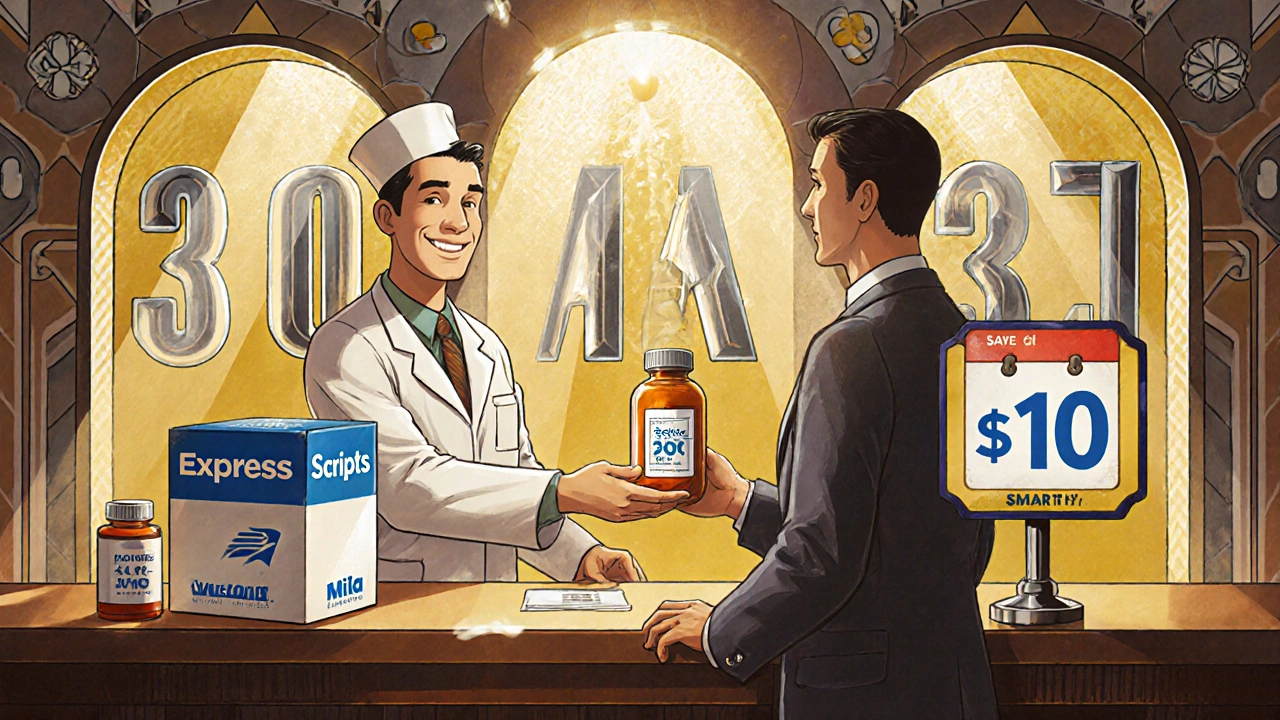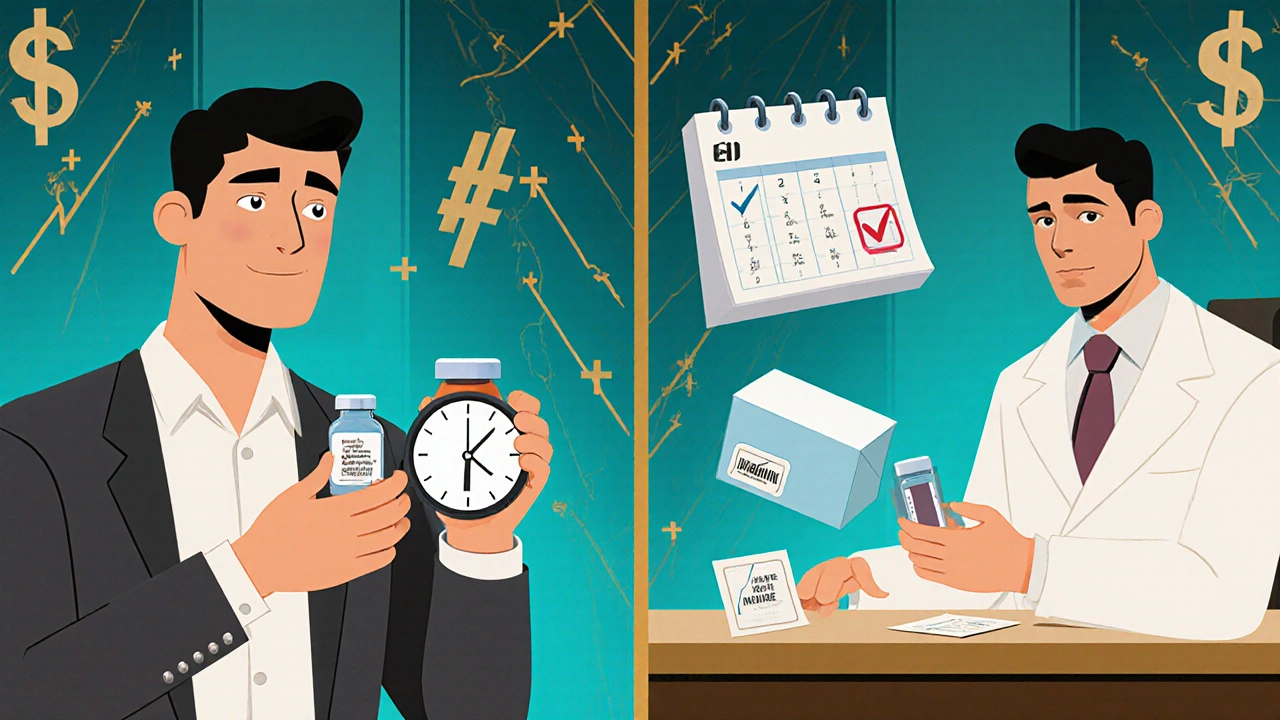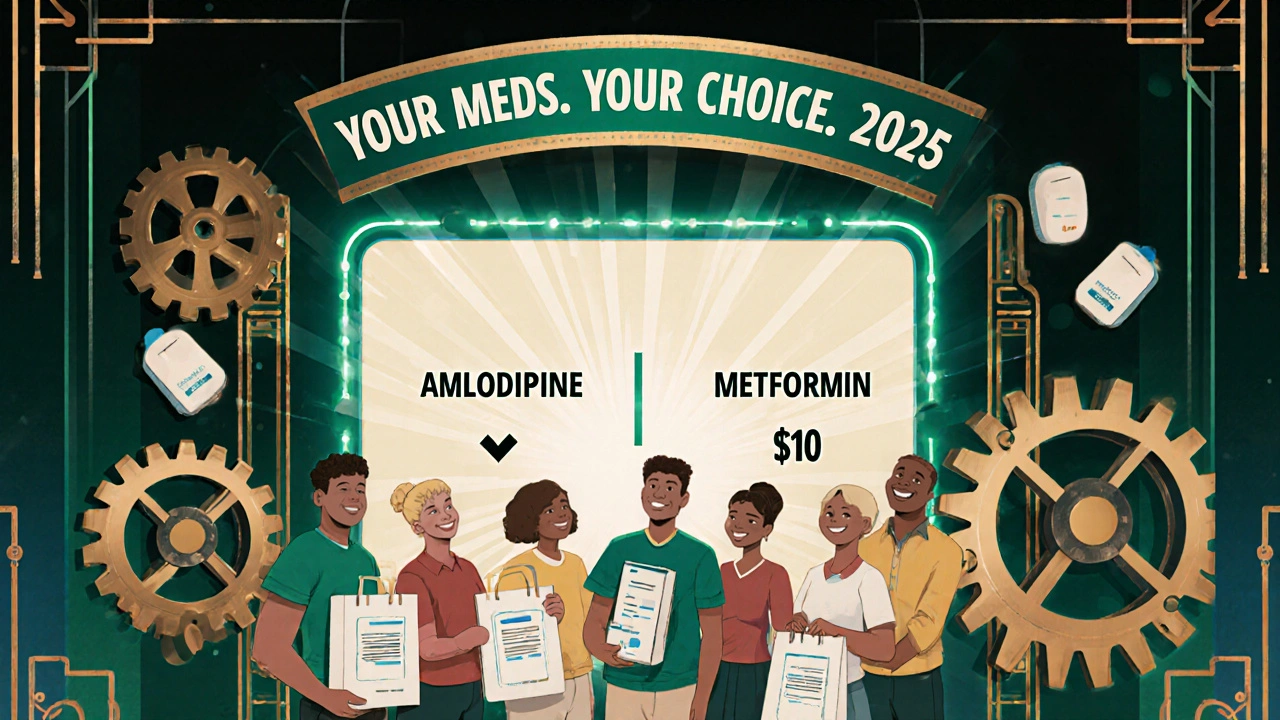How to Coordinate Mail-Order and Local Pharmacy to Save Money on Prescriptions
 Nov, 22 2025
Nov, 22 2025
Running out of medication can be stressful-especially when you’re paying hundreds a month for chronic conditions like high blood pressure, diabetes, or cholesterol. But what if you could cut those costs by up to 30% without switching doctors or skipping doses? The secret isn’t just finding cheaper drugs. It’s coordinating your mail-order pharmacy with your local pharmacy. Most people use one or the other. The smart ones use both-and save big.
Why Mail-Order Isn’t Always the Cheaper Choice
Mail-order pharmacies promise lower prices for 90-day supplies. And they’re right-sometimes. A 2007 study in the Journal of Managed Care Pharmacy found that patients saved an average of 29% on maintenance medications by using mail-order instead of local pharmacies. But that’s not the whole story. Savings vary wildly depending on your drug, your insurance, and even the pharmacy you choose. For example, a 30-day supply of generic amlodipine (a blood pressure pill) might cost $45 at your local CVS. The same drug, 90-day supply, through mail-order might be $115. That’s $1.28 per day versus $1.58. Not bad. But if your local pharmacy offers a $10 generic program (like Walmart or CVS), you could get 90 days for just $30. That’s $0.33 per day. Suddenly, mail-order doesn’t look so great. The key is knowing your plan’s formulary tiers. Most insurance plans group drugs into 3 or 4 tiers. Tier 1 is usually generic, cheapest. Tier 3 is brand-name, more expensive. Mail-order often gives you the best price on Tier 2 and Tier 3 drugs-but only if you use their service. Some plans charge the same copay whether you get 90 days from mail-order or your local pharmacy. Many don’t even tell you that.When to Use Your Local Pharmacy
Local pharmacies aren’t just for emergencies. They’re your best tool for new prescriptions, dose changes, and short-term meds. If your doctor just prescribed you a new antibiotic, a painkiller after surgery, or a new antidepressant with an uncertain dose, go local. Why? Because mail-order takes 7 to 14 days to ship. By then, you might be in pain, sick, or worse. Local pharmacies give you same-day access. They also have pharmacists on-site who can answer questions, check for interactions, and catch errors. A 2011 study in PMC found that 78% of patients preferred face-to-face consultations with their local pharmacist. Mail-order usually only offers phone support. And if your medication needs refrigeration-like insulin or certain biologics-shipping risks can ruin it. The FDA warns that temperature exposure during transit can reduce potency. Local pharmacies handle that safely.When Mail-Order Makes Sense
Mail-order shines for medications you take every day, for years. Think: blood pressure pills, thyroid meds, statins, diabetes drugs, antidepressants. These are stable, predictable, and rarely change. You know the dose. You’ve been on it for a while. No side effects popping up. Perfect for mail-order. Here’s how it works: Order your 90-day supply through your insurer’s mail-order service. Set a reminder 10 days before you run out. That gives you time to reorder before you’re empty. One Reddit user, u/MedSaver87, saved $427 a year by switching his amlodipine to mail-order and keeping his albuterol inhaler local. He used calendar alerts. Simple. Effective. Mail-order also helps if you’re on Medicare Part D. Their 2023 data shows a Tier 3 medication costing $45 for 30 days at retail, but only $115 for 90 days through mail-order. That’s 24% less per day. And if you’re on a commercial plan, Express Scripts reports average copays of $12.50 for 90-day generics-cheaper than most 30-day retail fills.
How to Actually Coordinate the Two
You don’t need a degree in pharmacy to do this. Just follow these steps:- List every medication you take. Include the name, dose, and how often you take it.
- Categorize them: Maintenance (daily, long-term), Acute (short-term, like antibiotics), Variable (new, dose-changing).
- Call your insurance and ask: "What’s my copay for a 30-day vs. 90-day supply of [drug name] at a retail pharmacy vs. mail-order?" Write it down. Don’t trust the website-they’re often outdated.
- Check local pharmacy discount programs. Walmart, CVS, and Rite Aid offer $4, $10, or $25 generic lists. Compare those prices to mail-order. You might be surprised.
- Assign each drug: Mail-order for maintenance. Local for acute and variable.
- Set reminders. Use your phone calendar. 10 days before a mail-order refill is due, order the next one. Never wait until you’re out.
- Build a relationship with your local pharmacist. Go in once a month. Ask: "Are there cheaper options?" They know about coupons, patient assistance programs, and plan quirks you don’t.
What Could Go Wrong (And How to Fix It)
This system works-but only if you stay on top of it. Here are common pitfalls:- Mail-order sends the wrong dose. One user on HealthUnlocked got the old strength of his antidepressant for two months because the system didn’t sync with his doctor’s new prescription. Solution: Always confirm your refill with your pharmacist before it ships.
- Insurance changes your copay. 41% of users in a GoodRx survey said their plan changed costs without warning. Solution: Review your monthly benefit statement. Look for changes in formulary tiers or mail-order rules.
- You forget to reorder. Running out of meds is dangerous. Solution: Set two reminders-14 days and 7 days before you run out. One for ordering, one as a backup.
- You assume mail-order is always cheaper. A 2022 RAND study found 28% of commercial plans actually charge more for mail-order on specialty drugs. Always check.

What’s Changing in 2025
The game is shifting. In 2023, UnitedHealthcare launched Optum Perks, blending mail-order with local pharmacy access. Medicare’s 2024 Part D redesign is standardizing 90-day copays across all channels. That means the old advantage of mail-order might shrink. But here’s the good news: More plans now let you get 90-day fills at your local pharmacy for the same price as mail-order. CVS Caremark, Express Scripts, and others have rolled out "Pharmacy Choice" programs. You can pick where you get your meds-without paying more. The future? Integrated tools like Epic’s "Pharmacy Navigator," which automatically tells you whether to get your refill from mail-order or local based on your drug, plan, and history. It’s coming fast.Real Savings, Real Results
GoodRx’s 2023 survey of 1,200 people found that 68% who coordinated their pharmacy use saved at least $150 a year. The top 32% saved over $300. That’s not a fluke. It’s strategy. One woman in Florida switched her metformin to Walmart’s $10 90-day program and her lisinopril to mail-order. Her monthly drug cost dropped from $210 to $87. That’s $1,476 saved in a year. You don’t need to be a pharmacist. You just need to be organized. Know your meds. Know your plan. Know your options. And never assume the cheapest option is the one your insurer pushes.Can I get a 90-day supply at my local pharmacy instead of using mail-order?
Yes, and many people don’t realize this. Insurance plans like CVS Caremark, Express Scripts, and others now allow you to get 90-day fills at local retail pharmacies for the same price as mail-order. Ask your pharmacist or call your insurance provider directly. Some plans even require you to request it-don’t assume it’s automatic.
What if my medication needs refrigeration?
Avoid mail-order for insulin, biologics, or any drug that must stay cold. Shipping delays or temperature exposure can make it ineffective-or even dangerous. Use your local pharmacy, which stores these drugs properly and gives you same-day access. The FDA warns that even brief heat exposure can degrade potency.
How do I know if my insurance plan is pushing me toward mail-order just to save money?
Insurance companies push mail-order because it cuts their administrative costs by 15-20% per transaction. But that doesn’t always mean you save. Always compare your out-of-pocket cost for 30-day vs. 90-day fills at both mail-order and local pharmacies. If the mail-order price isn’t lower, you’re not saving-your insurer is.
Can I use discount apps like GoodRx with mail-order?
Usually not. Mail-order pharmacies don’t accept third-party coupons like GoodRx or SingleCare. But you can use them at local pharmacies. If your mail-order price is higher than a GoodRx price at your local pharmacy, go local-even if your plan prefers mail-order. Your wallet wins.
How often should I review my medication plan?
At least once a year, but ideally every time you get a new prescription or your insurance plan changes. The American Pharmacists Association says 40% of patients could save over $200 a year just by checking if their meds are better suited for mail-order or local. Don’t wait until you’re out of pills.
Lisa Detanna
November 24, 2025 AT 14:20I used to think mail-order was the only way to save, until I found out Walmart had my metformin for $10. I switched everything I could and now I’m saving over $200 a month. My pharmacist even found me a coupon for my cholesterol med I didn’t know existed. Stop assuming your insurance has your best interest in mind-they’re not your friend, they’re a business.
Demi-Louise Brown
November 25, 2025 AT 11:43Coordination of pharmacy sources is a critical but underutilized strategy in chronic disease management. A systematic review of cost-saving interventions in medication adherence demonstrates that dual-channel utilization reduces out-of-pocket expenditure by an average of 27% while maintaining therapeutic continuity. The behavioral component-setting reminders and verifying formulary tiers-is as vital as the financial calculation.
Matthew Mahar
November 27, 2025 AT 09:05OMG I JUST REALIZED I’VE BEEN OVERPAYING FOR MY INSULIN FOR 3 YEARS BECAUSE I THOUGHT MAIL ORDER WAS CHEAPER?? I’M GOING TO MY LOCAL PHARMACY TOMORROW AND I’M GOING TO CRY WHEN THEY TELL ME IT’S $35 FOR 90 DAYS NOT $180. THANK YOU FOR THIS POST I’M NOT DEAD TODAY
John Mackaill
November 29, 2025 AT 07:58This is exactly the kind of practical, patient-centered advice that’s missing from most healthcare discussions. I’ve seen too many people stuck on mail-order because they’re told it’s ‘required’-when in fact, most plans now allow 90-day retail fills. A simple phone call to your insurer can unlock savings you didn’t know were possible. The system is designed to be confusing. Don’t let it win.
Adrian Rios
November 30, 2025 AT 20:40Look, I’m not a pharmacist, but I’ve been managing three chronic conditions for over a decade, and I’ve learned that the biggest lie in this whole system is that your insurance wants you to save money. They want you to use mail-order because it’s cheaper for them-not because it’s cheaper for you. I used to think I was being smart by ordering 90-day supplies, until I compared prices side by side. Turns out, my local CVS had my statin at $12 for 90 days. Mail-order wanted $75. I called my insurer. They said, ‘Oh, we just added that option last month.’ I’ve been paying $75 for two years. That’s not a mistake. That’s a trap. And now I’ve got a spreadsheet. Every med. Every price. Every refill date. I set alarms. I talk to my pharmacist like she’s my therapist. And I save over $300 a month. You can too. Just don’t wait until you’re out of pills to start asking questions.
Casper van Hoof
December 1, 2025 AT 06:50The underlying epistemological challenge in pharmaceutical cost management lies not in the availability of information, but in the cognitive dissonance between institutional incentives and individual outcomes. The patient is positioned as a passive recipient of algorithmically determined cost structures, when in fact, agency-however constrained-is both present and actionable. The act of comparing copays across modalities constitutes not merely fiscal prudence, but a quiet act of resistance against the commodification of health.
Richard Wöhrl
December 2, 2025 AT 20:40Important note: Always check if your drug is on the ‘excluded’ list for mail-order! My thyroid med was, and I didn’t know until I got a rejection notice. Also, some pharmacies (like Target) will price-match GoodRx-even if you’re using insurance. I got my antidepressant for $5 at Target after using a GoodRx coupon. Mail-order wanted $48. I called my insurer. They said, ‘We didn’t know you could do that.’ I told them, ‘Then you should tell your members.’ They sent me a letter. It said nothing. But I saved $500. So I’m happy.
Pramod Kumar
December 3, 2025 AT 13:31Bro, this is like finding out your aunt was hiding a treasure map in the Bible. I was paying $150 for my diabetes meds, then I found out my local pharmacy had a $10 list. I switched everything I could. Now I’m saving enough to buy chai every morning. My pharmacist even started saving me coupons from the drug companies. She’s like my secret weapon. I bring her cookies. She brings me savings. We’re a team now. And I don’t even have to wait two weeks for my meds to arrive. That’s peace of mind, man. Real peace.
Kane Ren
December 4, 2025 AT 06:45This changed my life. I’m not kidding. I used to panic every time I ran out. Now I have a calendar. I have a list. I have a pharmacist who remembers my name. I’m not just saving money-I’m sleeping better.